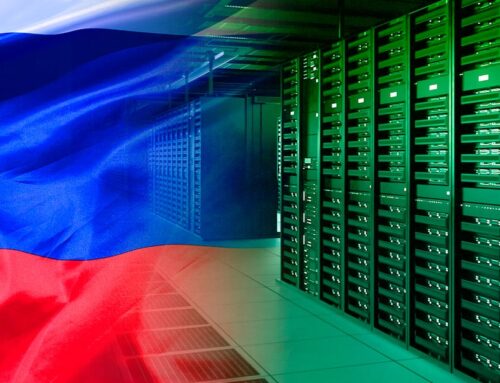Europe Renewable Energy Market Size and Forecast 2025–2033
November 27, 2025
The Europe Renewable Energy Market is expected to reach US$ 1,237.51 billion by 2033, rising from US$ 381.45 billion in 2024, representing a robust CAGR of 13.97% from 2025 to 2033, according to Renub Research. This sustained expansion reflects Europe’s determination to lead the global clean energy transition, driven by aggressive climate goals, strong policy frameworks, widespread decarbonization strategies, and a surge in investments across solar, wind, hydro, and bioenergy infrastructure.
As countries across the region accelerate their shift away from fossil fuels, Europe’s renewable energy ecosystem continues to evolve through innovations in digitalization, automation, grid modernization, energy storage, and cross-border electricity trading. The combination of public and private commitments has created a powerful framework that supports long-term sustainability, energy security, and economic resilience.
Europe Renewable Energy Industry Overview
The renewable energy sector in Europe is currently undergoing one of the most dynamic transformations in its history. From government-led climate initiatives to private-sector sustainability commitments, the region is pushing aggressively toward a carbon-neutral future. The implementation of the EU Green Deal, renewable energy directives, and national transition plans has significantly strengthened the market’s foundation.
Solar PV installations, offshore and onshore wind farms, hydropower upgrades, and emerging areas like green hydrogen and bioenergy are receiving unprecedented financial and regulatory backing. The growing deployment of smart grids and energy storage systems ensures better management of intermittent power sources, while digital technologies including AI, IoT, and remote monitoring help optimize grid performance and reduce operational costs.
In early 2025, the EU announced EUR 52 million in cross-border renewable projects between Estonia and Finland, an initiative expected to add 445 MW of capacity by 2028, further strengthening the region’s integrated energy network. Meanwhile, corporate power purchase agreements (PPAs) surged to 19 GW in 2024, signaling strong private-sector commitment to decarbonization and clean energy adoption.
Despite the region’s impressive momentum, challenges persist—particularly in areas like grid integration, variability in government regulations, and high capital costs associated with large-scale renewable infrastructure. However, Europe’s strategic investments in green hydrogen, carbon capture, and hybrid renewable systems demonstrate a clear long-term roadmap toward a cleaner and more resilient energy ecosystem.
Key Factors Driving the Europe Renewable Energy Market Growth
1. Strong Policy Frameworks and Decarbonization Goals
Policy remains the backbone of Europe’s renewable energy landscape. The European Union’s climate commitments—including its ambition to achieve net-zero emissions—have accelerated clean energy investments across member states. Binding national targets, emission trading schemes, tax benefits, subsidies, and feed-in tariffs have collectively strengthened the economic viability of renewable energy projects.
Governments have also introduced renewable energy quotas, grid modernization mandates, and cross-border energy-sharing frameworks. These initiatives promote a cohesive energy strategy across Europe, enabling greater integration of intermittent sources like wind and solar. Stable regulatory environments have attracted foreign investments, boosted competitiveness, and spurred innovation across the renewable energy value chain.
2. Technological Advancements and Infrastructure Modernization
Technological innovation remains central to Europe’s rapid renewable energy expansion. Advancements in solar PV efficiency, next-generation offshore wind turbines, and high-capacity battery storage systems are significantly improving energy generation and reliability. Digital technologies—AI, IoT, blockchain, and predictive maintenance systems—are being widely adopted to optimize grid stability and energy management.
The modernization of transmission systems and the development of smart grids have made it easier to integrate distributed energy resources. Cross-border grid interconnections enhance energy trading and supply balancing, while hybrid renewable systems combining solar, wind, and storage help stabilize output.
Continuous R&D investments are lowering production costs and improving system performance, providing a future-ready foundation for Europe’s clean energy transformation.
3. Growing Investments and Private Sector Participation
Investment levels in Europe’s renewable energy sector continue to surge. Governments, development banks, corporate enterprises, and private equity investors are all participating in clean energy financing. Green bonds, sustainability-linked loans, and public-private partnerships are creating new opportunities for infrastructure development.
Corporate PPAs have become a hallmark of Europe’s clean energy market, with major businesses locking in long-term renewable supply contracts to meet sustainability commitments. Venture capital funding in energy storage, digital grid solutions, and clean tech startups is accelerating innovation at a rapid pace.
The region’s growing appetite for ESG-compliant assets further fuels investment momentum, strengthening renewable energy portfolios across Europe and enhancing long-term market stability.
Challenges Impacting the Europe Renewable Energy Market
Intermittency and Grid Integration Issues
Intermittency remains one of Europe’s biggest technical challenges. The variable nature of wind and solar requires advanced storage systems and flexible grid management. Many existing grids were originally designed for centralized fossil-fuel generation, making renewable integration complex and costly.
Transmission bottlenecks, curtailment issues, and cross-border capacity constraints can reduce renewable utilization. Modernizing outdated grid networks, enhancing forecasting technologies, and expanding storage capacity are essential to maintaining reliability.
High Capital Costs and Financing Barriers
While renewable technologies have become more affordable, large-scale project development still requires substantial upfront investment. Long permitting processes, inconsistent subsidies, and financial uncertainties can hinder project timelines—especially for small and medium developers.
Inflationary pressures, fluctuating interest rates, and complex compliance requirements further affect financing. Innovative solutions such as blended finance, green bonds, and public–private partnerships are helping mitigate these challenges, but equitable access to capital remains an area for improvement across member states.
Europe Renewable Energy Market Overview by Regions
France
France continues to strengthen its renewable energy infrastructure through national policies promoting diversification and decarbonization. The country is expanding its solar and wind sectors while maintaining hydropower as a stable base-load source. Government incentives and grid modernization efforts support higher renewable penetration.
The French Energy Transition Law aligns closely with EU goals, emphasizing emission reduction, sustainability, and grid resilience. Despite challenges around intermittency and modernization, France’s commitment to clean energy ensures steady growth driven by public funding, rural solar expansion, and coastal wind developments.
Germany
Germany remains one of the continent’s largest and most influential renewable energy markets. Its ambitious Energiewende (energy transition) strategy focuses heavily on expanding wind, solar, and bioenergy capacity. Feed-in tariffs, auction systems, and supportive legislation have long encouraged innovation and investment.
The country is a leader in offshore wind development and distributed energy systems. However, regulatory complexities and intermittency continue to challenge grid operations. Germany’s strong industrial capabilities, long-term policy commitment, and advanced technology ecosystem position it as a global benchmark for renewable energy innovation.
Italy
Italy’s renewable energy market benefits from strong solar resources, government incentives, and EU-aligned sustainability targets. Solar PV and onshore wind are the country’s fastest-growing segments, supported by green bonds, digital meter rollouts, and increasing consumer awareness.
Although grid connectivity and administrative processes remain hurdles, expanding energy storage capabilities and regional cooperation are improving project execution. Italy’s focus on energy independence and emission reduction makes it a vital contributor to Europe’s clean energy transition.
Spain
Spain is rapidly emerging as one of Europe’s top renewable energy leaders. The country enjoys abundant solar radiation and favorable wind resources, making it ideal for large-scale renewable deployment. Government-backed incentives, transparent auctions, and corporate PPAs have accelerated investment in solar PV and onshore wind.
Grid connectivity improvements and smart grid adoption are helping Spain manage intermittency more effectively. Although regional permitting challenges persist, Spain’s commitment to innovation and climate goals strengthens its role in Europe’s evolving energy landscape.
Market Segmentations
By Type
Hydro Power
Wind Power
Solar Power
Bioenergy
Others
By End User
Industrial
Residential
Commercial
By Country
France
Germany
Italy
Spain
United Kingdom
Belgium
Netherlands
Russia
Poland
Greece
Norway
Romania
Portugal
Rest of Europe
Key Companies Covered
Innergex Renewable Energy Inc.
ABB Ltd.
Siemens Energy AG
Acciona S.A.
National Grid plc
Électricité de France S.A.
Enel S.p.A.
General Electric Company
Duke Energy Corporation
Invenergy
Each company plays a pivotal role across renewable energy segments, contributing through technological innovation, grid infrastructure, EPC services, and large-scale renewable project development.
Final Thoughts
Europe’s renewable energy market is on the cusp of a transformative decade. Backed by policy support, innovative technologies, and a surge in investments, the region is fast advancing toward its long-term decarbonization goals. While grid integration, regulatory complexity, and financing hurdles remain ongoing challenges, Europe’s strategic approach to green innovation continues to set global standards.
With sustained political will, cross-border cooperation, and private-sector engagement, Europe is well-positioned to achieve a clean, secure, and resilient energy future—solidifying its role as a world leader in renewable energy transformation.
Search
RECENT PRESS RELEASES
Related Post




